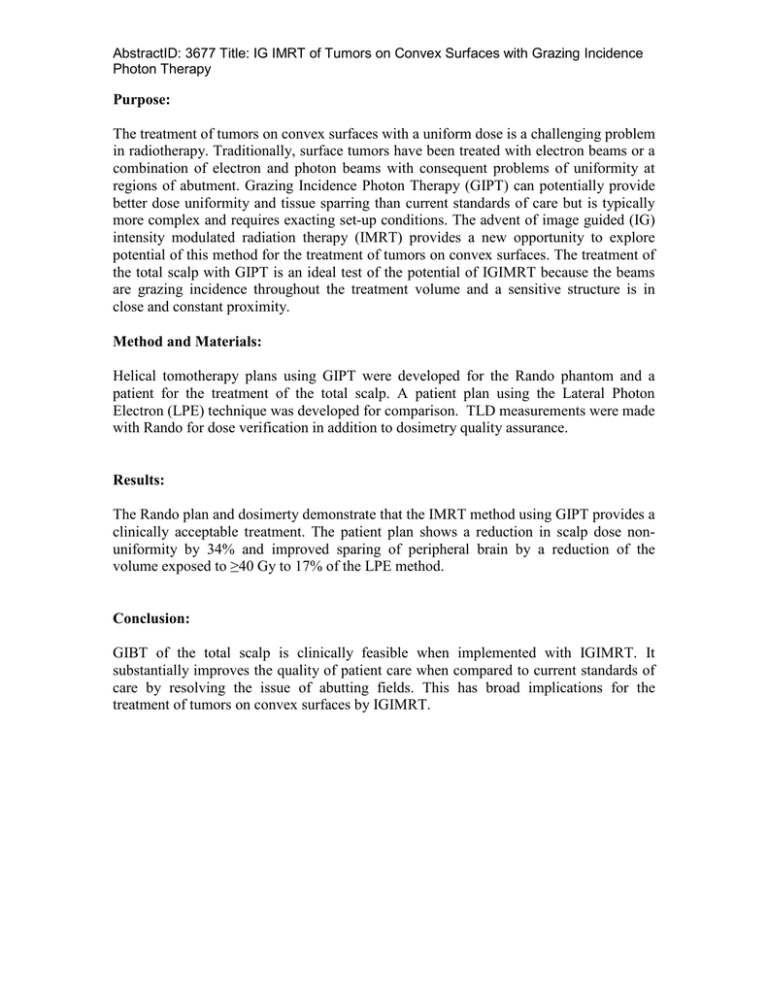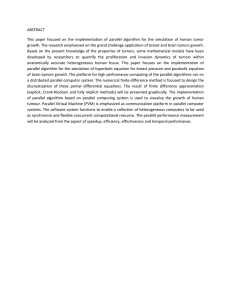Purpose: The treatment of tumors on convex surfaces with a uniform... in radiotherapy. Traditionally, surface tumors have been treated with electron...
advertisement

AbstractID: 3677 Title: IG IMRT of Tumors on Convex Surfaces with Grazing Incidence Photon Therapy Purpose: The treatment of tumors on convex surfaces with a uniform dose is a challenging problem in radiotherapy. Traditionally, surface tumors have been treated with electron beams or a combination of electron and photon beams with consequent problems of uniformity at regions of abutment. Grazing Incidence Photon Therapy (GIPT) can potentially provide better dose uniformity and tissue sparring than current standards of care but is typically more complex and requires exacting set-up conditions. The advent of image guided (IG) intensity modulated radiation therapy (IMRT) provides a new opportunity to explore potential of this method for the treatment of tumors on convex surfaces. The treatment of the total scalp with GIPT is an ideal test of the potential of IGIMRT because the beams are grazing incidence throughout the treatment volume and a sensitive structure is in close and constant proximity. Method and Materials: Helical tomotherapy plans using GIPT were developed for the Rando phantom and a patient for the treatment of the total scalp. A patient plan using the Lateral Photon Electron (LPE) technique was developed for comparison. TLD measurements were made with Rando for dose verification in addition to dosimetry quality assurance. Results: The Rando plan and dosimerty demonstrate that the IMRT method using GIPT provides a clinically acceptable treatment. The patient plan shows a reduction in scalp dose nonuniformity by 34% and improved sparing of peripheral brain by a reduction of the volume exposed to 40 Gy to 17% of the LPE method. Conclusion: GIBT of the total scalp is clinically feasible when implemented with IGIMRT. It substantially improves the quality of patient care when compared to current standards of care by resolving the issue of abutting fields. This has broad implications for the treatment of tumors on convex surfaces by IGIMRT.



